Average Chicken Breast Weight Guide | Size & Price Insights 2024
Unlock the secrets to chicken breast weight in 2024! Whether you’re cooking or shopping, learn how much a small, boneless, or average chicken breast weighs. Find out the price of chicken and weight for fillets up to 2.5kg. Perfect for meal prep and budgeting. Click now for detailed info! The post Average Chicken Breast Weight Guide | Size & Price Insights 2024 appeared first on Go Guru.

Average Chicken Breast Weight Guide | Size & Price Insights 2024
Chicken breasts are a versatile and popular food item, enjoyed by people worldwide. Understanding the average weight of chicken breasts is crucial for meal planning, recipe development, and budgeting. This guide provides comprehensive insights into the weight, price, and size variations of chicken breasts.
How Much Does an Average Chicken Breast Weigh?
The average weight of a chicken breast varies depending on the type, size, and preparation method used.
- Whole chicken breast (bone-in, skin-on): 8-12 ounces (227-340 grams)
- Whole chicken breast (boneless, skinless): 5-8 ounces (142-227 grams)
- Chicken fillet (boneless, skinless): 3-5 ounces (85-142 grams)
Price of Chicken Breasts
The price of chicken breasts also varies depending on the type, size, and location.
- Whole chicken breast (bone-in, skin-on): $0.89-$1.29 per pound
- Whole chicken breast (boneless, skinless): $1.99-$2.99 per pound
- Chicken fillet (boneless, skinless): $3.99-$4.99 per pound
How Much Does a Small Chicken Breast Weigh?
A small chicken breast typically weighs around 3-5 ounces (85-142 grams). This size is suitable for individual servings or small meals.
How Much Does a 16-Ounce Piece of Chicken Weigh?
A 16-ounce piece of chicken weighs 1 pound and typically comprises two whole chicken breasts (bone-in, skin-on).
Chicken Breast 2.5kg
Chicken breasts sold in 2.5kg packs typically contain multiple chicken breasts, both bone-in and boneless varieties. The exact number of breasts in a pack varies based on the size and type of chicken.
Average Chicken Breast Weight Guide | Size & Price Insights 2024
What is the Average Weight of a Chicken Breast?
A chicken breast typically weighs around 0.5 to 0.75 pounds (227 to 340 grams). However, the weight can vary depending on the size and breed of the chicken. For instance, a small boneless, skinless chicken breast might weigh around 0.25 to 0.5 pounds (113 to 227 grams), while a large bone-in, skin-on chicken breast can weigh 1 pound (454 grams) or more.
How Much Does a 2.5kg Chicken Breast Weigh?
To calculate the average weight of one chicken breast from a 2.5kg pack, we can divide the total weight by the number of breasts in the pack. Assuming there are four breasts in the pack:
Average Chicken Breast Weight = Total Weight ÷ Number of Breasts
2.5kg ÷ 4 = 0.625kg (1.375 pounds)
Price of Chicken Breasts
The price of chicken breasts varies depending on factors such as size, type (bone-in/boneless, skin-on/skinless), and location. In general, large, bone-in, skin-on breasts tend to be more affordable than smaller, boneless, skinless breasts.
Chicken Breast Weight Conversion Table
| Chicken Breast Type | Average Weight (pounds) |
|---|---|
| Small, boneless, skinless | 0.25-0.5 |
| Medium, boneless, skinless | 0.5-0.75 |
| Large, boneless, skinless | 0.75-1 |
| Small, bone-in, skin-on | 0.5-0.75 |
| Medium, bone-in, skin-on | 0.75-1 |
| Large, bone-in, skin-on | 1+ |
Key Takeaways
- The average weight of a chicken breast ranges from 0.5 to 0.75 pounds (227 to 340 grams).
- The weight can vary depending on the size and breed of the chicken.
- A 16-ounce piece of chicken weighs approximately 1 pound.
- The price of chicken breasts can vary based on size, type, and location.
- Using a chicken breast weight conversion table can help you determine the weight of your chicken breast based on its type.
Average Chicken Breast Weight Guide | Size & Price Insights 2024
What is the Average Weight of a Chicken Breast?
A chicken breast typically weighs around 0.5 to 0.75 pounds (227 to 340 grams). However, the weight can vary depending on the size and breed of the chicken. For instance, a small boneless, skinless chicken breast might weigh around 0.25 to 0.5 pounds (113 to 227 grams), while a large bone-in, skin-on chicken breast can weigh 1 pound (454 grams) or more.
How Much Does a 2.5kg Chicken Breast Weigh?
To calculate the average weight of one chicken breast from a 2.5kg pack, we can divide the total weight by the number of breasts in the pack. Assuming there are four breasts in the pack:
Average Chicken Breast Weight = Total Weight ÷ Number of Breasts
2.5kg ÷ 4 = 0.625kg (1.375 pounds)
Price of Chicken Breasts
The price of chicken breasts varies depending on factors such as size, type (bone-in/boneless, skin-on/skinless), and location. In general, large, bone-in, skin-on breasts tend to be more affordable than smaller, boneless, skinless breasts.
Chicken Breast Weight Conversion Table
| Chicken Breast Type | Average Weight (pounds) |
|---|---|
| Small, boneless, skinless | 0.25-0.5 |
| Medium, boneless, skinless | 0.5-0.75 |
| Large, boneless, skinless | 0.75-1 |
| Small, bone-in, skin-on | 0.5-0.75 |
| Medium, bone-in, skin-on | 0.75-1 |
| Large, bone-in, skin-on | 1+ |
Key Takeaways
- The average weight of a chicken breast ranges from 0.5 to 0.75 pounds (227 to 340 grams).
- The weight can vary depending on the size and breed of the chicken.
- A 16-ounce piece of chicken weighs approximately 1 pound.
- The price of chicken breasts can vary based on size, type, and location.
- Using a chicken breast weight conversion table can help you determine the weight of your chicken breast based on its type.
How Much Does a Chicken Breast Weigh? A Comprehensive Guide
Chicken breast is a popular and versatile cut of meat, highly valued for its lean protein content and versatility in cooking. Understanding the weight of a chicken breast can be crucial for accurate recipe preparation, meal planning, and budgeting. This article provides a comprehensive guide to chicken breast weights, exploring different sizes and factors that influence weight.
Average Chicken Breast Weight
An average boneless, skinless chicken breast weighs approximately 4-6 ounces (113-170 grams). This weight may vary slightly depending on the size of the chicken from which it is sourced.
Factors Affecting Chicken Breast Weight
Several factors can impact the weight of a chicken breast, including:
- Breed: Different chicken breeds may have different average breast weights.
- Age: Older chickens tend to have larger breasts than younger ones.
- Diet: A chicken’s diet can influence its growth rate and, consequently, the size of its breasts.
Common Chicken Breast Sizes
- Small: 2-4 ounces (57-113 grams)
- Medium: 4-6 ounces (113-170 grams)
- Large: 6-8 ounces (170-227 grams)
Price of Chicken Breast
The price of chicken breast can vary based on several factors, including:
- Availability: Seasonal changes and supply and demand can influence prices.
- Grade: Higher-grade chicken breast, such as organic or free-range, may cost more.
- Size: Larger breasts typically command a higher price per pound.
Using Chicken Breast Weights in Cooking
Accurately measuring chicken breast weight is essential for:
- Recipe Preparation: Ensure you have the correct amount of chicken for the recipe.
- Cooking Time: Different breast sizes require different cooking times.
- Portioning: Divide chicken breasts into equal portions for meal planning.
Additional Weight Considerations
- Bone-In: Bone-in chicken breasts weigh more than boneless breasts, with approximately 2-3 ounces (57-85 grams) of bone per breast.
- Skin-On: Skin-on breasts weigh more than skinless breasts, with the skin accounting for approximately 1 ounce (28 grams) of weight.
How Much Does A Chicken Breast Weigh
How Much Does A Chicken Breast Weight In Grams
Pixabay One chicken breast is boneless and skinless today. It weighs in at 5-6 ounces. This is an ounce more than 40-year-old average breast weight. A chicken’s total average weight has also increased, with latest estimates around 6 lbs. Everyone. Popularity Chicken Chicken is one of the world’s common protein meats due to its high protein count, low calories and low saturated fat.
Often used as the healthier animal protein relative to red meat. Fresh chicken sales in the United States reached over $10 billion last year. To keep up with the global demand, chicken farmers have been increasing the size and number of broiler birds (those that are bred to produce meat) faster. The size and development of chickens was quite small.
Rise in the U.S. population Chicken’s rising popularity as low-cost, high-protein meat dovetails with corresponding U.S. population growth. According to the latest figures, there are approximately 330 million U.S. residents. This is compared with 115 million in the previous year. With chicken remaining a low-cost food staple.
It would be consumed by Americans for many years. A nimal advocate Animal activists like PETA and the American Humane Society quote inhumane factory conditions that fed and kept chickens until they hit their market size. Reports of chickens rising crowded, filthy pens overflowing with feces and disease.
The size of chickens is much higher than that of their ancestors. Factory-farmed chickens appear to be squeezed together to improve eating performance. For chickens, this means less movement, since they have less room to run. Ultimately, this leads to bigger chickens sizes, which would possibly add more money to the chicken producer. According to the National Chicken Council, over 9 billion broiler chickens were raised last year.
How Much Do Different Types Of Chicken Breasts Weigh?
Although chicken is one of the easiest meals to cook, there are many pieces that weigh different. Most people opt for high-quality breasts.
On average, a chicken breast weighs 174g or 6.03oz. There are many factors that you should consider when determining the breast’s actual weight. These variables include;
- The state of chicken, raw or cooked
- The temperature of the breast (frozen or thawed)
- Type of breast: with bones, or without
Different types of chicken breasts can be measured:
The meat is sweet and always moist when cooked, thanks to the bone. It is cheaper, but has fewer parts.
A bone-in breast weighs between 283-425g and 0.6 to 0.9 lb. The weight of a single bone is 20%. So, the bone in a bone-in chicken weighs almost 0.12lb.
Varieties Of Chicken Breast
There are different varieties of chicken breast that you can buy for your everyday culinary needs. For instance, you can choose pre-trimmed and ready-to-cook chicken breasts. You can also choose individually packaged frozen chicken breasts, which are often found at grocery stores or bulk food warehouses.
These chicken breasts are often packaged in convenient sizes. However, it is important to verify the nutritional facts label. You may also find labels on packaged chicken breasts that claim they are organic or antibiotic-free. You need to be careful because some of this information could be misleading.
According to the United States Department of Agriculture (USDA), producers of free-range chicken must prove to the agency that their chickens are allowed to access outside. The USDA requires natural chicken products to be free from artificial colors and added ingredients. They also require minimal processing.
The products must be treated in such a manner that they don’t change fundamentally. Also, the label must explain clearing the meaning of the word natural. For instance, it should include self-explanatory terms such as “no artificial ingredients” and “minimally processed”.
The USDA prohibits use of “nohormones added” as a term on breasts for chickens, because federal law bans producers from using hormones to raise poultry.
The agency prohibits you from using the phrase “no antibiotics added to” for chicken breasts and other poultry products, unless there is sufficient documentation that proves that your chickens were not raised with antibiotics.
Organic chicken producers must also include “organic” in their products if they feed their birds 100 percent organic food. These factors are important when you are searching for the best chicken breasts for your dietary needs.
How Much Does A Chicken Breast Weigh
Knowing the chicken’s weight is crucial. You might want to weigh it every time you cook because then you can make sure that everyone gets a healthy amount of food. But it might not be practical to weigh it before or after cooking so instead, there are weight ranges for different parts of a chicken and for calories and protein content. Knowing the weight of your chicken breast is crucial. This information is important so you are able to make equal servings.
Sometimes it can be difficult to accurately weigh your chicken each time you cook it. There are standards that will help you determine the weight of a whole chicken. A full chicken has different cuts with different sizes and proportions, and they have different calories and protein content too.
How to know the weight of your chicken breast?
You can determine how many calories you’re consuming by knowing the weight of your chicken breasts. For example, one 3-ounce (86g) serving of boneless and skinless grilled chicken breast provides 170 calories compared to only 25 g of proteins.
Consequently, if you eat a lot of these, it might not be healthy for you because it might be too many! This depends on how active you are and what other factors affect your calorie intake. Knowing how much your chicken breast weighs will help you control your calorie intake. Sometimes it can be difficult to determine how many calories are in your diet.
For example, one 3-ounce serving of grilled, boneless and skinless chicken breast has 170 calories. But it is hard to know the number of calories more than that because people’s activity levels vary so much.
Knowing the weight of chicken breasts can help you make informed choices about calories. This depends on many factors, such as expert advice.
What Does a Boneless Chicken Breast Weight?
The average weight of boneless chicken breasts is 3 oz (85g) to 8oz (2225g). The average boneless chicken breast weighs 5 ounces (141g).
The breast sizes of chickens vary depending on the package. Each pack should mention the overall weight. Because the collection weighs more than one pound, prices per pound are generally higher. You can estimate if, for some reason, you do not have the packaging or labels. Perhaps you’ve already thrown it, but you want to know how much chicken you purchased. You can, in general, estimate that two breasts of chicken will be approximately a pound, depending on the size of the chicken breast. Two eight-ounce chicken breasts would weigh 1 pound. It is very large to have a chicken breast of eight-ounce.
Each box varies in weight; therefore, select a few packages to shut one. A kitchen scale is the best way to accurately weigh every breast of chicken.
The chicks of today are much larger than those 40 years ago. This is due to selective breeding and better nutrition. This indicates that the breasts of the chicken are also considerably more prominent and may grow. Chickens have no breasts. Pectoral muscles make up the bosom. The strength can be found on either side. The seemingly effortless division can then be cut exactly where it occurs. That’s why they’re called breast halves occasionally.
How Much Do Chicken Breasts Weigh?
The average weight of store bought chicken breasts is around 15 to 18 ounces. Chickens will live for around 10 – 15 years. The average hen’s female will lay 300-325 eggs each year. However, not all eggs will hatch. The most common breed used in the US for meat production is the White Rock and Cornish Cross.
You can cook chicken by baking, grilling or stewing. Different parts of chicken are eaten in different countries. However, Americans prefer to eat the breast meat. Chicken breasts purchased at a market or store weigh between 15-18 ounces (or 425-505 grams). Chickens will live for around 10 – 15 years. On average, a female chicken will lay 300 eggs each year.
The breed of chicken most commonly bred solely for meat production is the Cornish Cross and White Rock. In the United States, a chicken which is bred only for food is known as a broiler chicken. You can use chicken in many different ways, including baking, deep-frying, stewing and steaming. In different parts of the world different parts of the chicken are eaten such as legs in China or feet in Italy. The average weight of store or market bought chicken breasts is around 15 to 18 ounces (425 to 510 grams).
The average life expectancy of chickens is between 10 and 15 years. On average, females lay 300 eggs each year. White Rock and Cornish Cross are the most well-known chicken breeds in America. Different parts of chickens are eaten in different places around the globe, however they all taste good. The average weight of store-bought chicken breasts is around 15 to 18 ounces (425 to 510 grams).
The average lifespan of chickens is between 10 and 15 years. A female hen will lay on average about 300 eggs per year. The most common breed of chicken that is bred only for meat production is the Cornish Cross and White Rock. A broiler chicken is an American chicken that is only bred for food.
There are many options for how chicken can be prepared, including deep-frying, grilling, baking and stewing. In different parts of the world, different parts of the chicken are eaten depending on what people like to eat more there. To figure out the weight of a breast, you can use math. Add the total fat to the breasts, and divide it by 4. That way you will know how big each breast is.
Depending on the size of your chicken breast, it can either be large or small. For example, on average, a serving size of chicken has about 4 ounces in it. Because they are familiar with how to judge different sizes by looking at them, butchers don’t need to weight them. ).
The best way to serve chicken is to cut it into something small enough that your hand fits around it comfortably, but if you need more than this then make sure you give people smaller pieces (which means bigger breasts). To find out the weight of a breast, take the total weight of fat and divide by how many breasts you have.
You can also use this formula for chicken breasts if you know how much they weigh. Sometimes, breasts are bigger or smaller than two ounces to twelve ounces. A serving size is usually four ounces. You can also use a scale to determine your weight. You can compare the weight of your chicken breast with what your hands are.
It should be lighter than your hands. This means there is not enough meat and it needs to cook longer so it can’t be eaten yet.
What is a Chicken Breast?
The chicken breast is the lean meat from the chicken’s pectoral muscle. One breast is usually made up of two halves. These are separated at slaughter and then packed individually. Boneless chicken breasts are more expensive than chicken wings, chicken drumsticks and chicken thighs.
Since the chicken breast is white meat, it comes with numerous health benefits to the body including enabling you to maintain muscle mass and a healthy metabolism.
Additionally, it helps strengthen bones and reduces the chance of bone fractures. Research has shown that calcium and protein work together to protect and strengthen bones.
You can also use chicken breast to control your hunger pangs, and prevent overeating. It makes you feel satisfied for longer periods of time. A recent study of obese men on reduced-calorie diets found that men who consume more protein presented an enhanced appetite control and fullness.
How to Measure the Weight of Chicken Breast
Perhaps the whole chicken breast region will be enough to carry out your measurement.
The most common tool for measuring chicken breasts is an electric scale. This tool will calculate the chicken breast in ounces or grams by simply using a toggle button to change your measurement. The machine also allows you to convert weight from one unit.
Sometimes, you can use your conversion table to complete your measurement of the chicken breast. You can use this step to create metric measurements. This allows you to make an equal amount of chicken breasts for precise measurement. You can also compare the chicken breast with other components of the chicken breast and calculate the final weight.
The conversion table will also provide the calorie estimate for a portion size of the chicken breast. You can use the conversion table to calculate the exact measurement of your chicken breast before and after cooking. The conversion table is primarily useful when looking for the nutritional value of each portion of the chicken breast compared to the nutrients they offer.
What are the Calories in a Chicken Breast?
A chicken breast without skin contains approximately 160 to 180 calories
The breast size will affect the amount of this measurement, however it is an estimate.
Chicken is low in calories, as you can see.
When chicken is served with cheese or sauces, it will be more calorie-dense.
On its own, chicken is a relatively lean food, and it is not a bad thing to eat when you are on a diet.
Chicken has quite a bit of protein, which is something that will help you feel less hungry between meals.
What is a Pound of Boneless Chicken Breast?
The answer to this question will likely depend on the varying sizes of chicken breast packages. Each package of chicken will display the total weight, and in most cases, the pack will weigh more than a pound. Many chicken breasts can be purchased by the pound.
If you do not have the package labeled, it is possible to weigh or estimate the chicken breast. Two chicken breasts of the same size will usually weigh about 1 pound. However, it is not uncommon to find larger ones.
Two 8 ounces of chicken breasts, for instance, is equivalent to 1 pound in weight, and keep in mind that 8oz of chicken breast is quite extensive. If you like estimating, consider the fact that a 4 oz. raw chicken is equivalent to the weight of a deck of cards, while 8-10 ounce chicken breasts should be equivalent to the largest iPhone.
Most chicken breasts will have a weight in grams. A 450g chicken breast pack is equivalent to 100g. 1 kg. of chicken breast is approximately 2.2 pounds; hence you should be able to do some conversions to estimate the final measurement of your Chicken breast regardless of the unit of measure you will find on it.
How Do We Measure The Weight Of A Chicken Breast
It is important to weigh your food meal by meal in order to find whatever nutrients you’re going to get. Before you weigh anything, you must have a kitchen scale. This unit can be electric or mechanical. It doesn’t really matter what type of unit you choose, the results will still be the same.
You should ensure that the scale you choose has a bowl. Again, you’ll need a pair of tongs or you can use your hands. This is how you weigh your chicken breast raw. Let’s start:
- First things first, wash your hands then defrost your chicken breast.
- Place a bowl on your scale then lightly dust it then record the weight.
- Using a pair of tongs, place your chicken breast on the bowl and record the weight.
- Add the two amounts and you will get the total weight of the chicken breast.
Always refer to the instruction manual when you use different weighing scales. The weight of chicken breasts can be slightly increased by freezing them, but it will not affect the meat’s quality in any other way. Because water and fats are absorbed from meat, cooking it reduces its weight.
The weight of the breasts can be reduced by any cooking technique. The weight reduces by 20 to 30%. This means that when you want to eat a 500g breast you must buy at least 700g of chicken breast.
How Many Chicken Breasts In A Pound?
You are not the only person who wants to find out how many boneless or chicken breasts are contained in one pound. It is difficult to know the exact number. The size of your chicken will determine the answer.
But we will say that for an average size person, 2 cooked/ cubed medium-sized chicken breast with bone: 1 pound is equivalent to 1.5 cups. Two medium-sized boneless or skinless chicken breasts, cooked or cubed, equals 2 cups. You’re not the only one wondering about how many chicken breasts you can fit in 1 pound. It’s confusing, because it is not possible to give a definitive answer.
The size of the chicken determines how many chicken breasts are in one pound. We will however give you an estimation, which isn’t exact. For two medium-sized cooked/cubed boneless and skinless chicken breast: 1.5 cups or 2 cups
What Is A Chicken Breast?
Judging from whatever we know, a full chicken has different cuts with varying sizes and proportions. Calories and protein content are also determined by whatever part you’re going to take.
According to Ryan Raman, a health expert, a skinless, cooked chicken breast that is about 172g contains 54g of protein.
Chicken breasts also contain 284 calories. 80% is protein and 20% fat. Simply put, for each 100g of weight there are approximately 31g and 163 calories, respectively.
Other parts of chicken have lower protein content than chicken breasts. And that’s why bodybuilders are recommended to take.
Similar Post: What is the Cost of 3 Ounces Of Chicken Breast?

How Many Grams In Average Chicken Breast?
The average chicken breast weighs 174g (6 oz). Usually, chicken breast in grams weighs from 110 grams to 280 grams.
You may obtain a reasonable estimate by learning how to assess different weights using a few basic approaches. You will eventually be able to estimate any weight without the need for a scale.
I seldom buy from the meat section a single chicken breast. Since it is more convenient and economical to package chicken breasts, they usually come with 3 or 4 kidney breasts in each box. Each package weighs differently, and prices are somewhat varied per pound. To see the potential of each breast, I do not always use mathematics.
What is the shelf life of chicken in the freezer?
Once stored, how long does chicken last in the freezer? Individual pieces of raw chicken stay good in the freezer for 9 months, and whole chickens are good for up to a year when frozen. The video element is not supported by your browser. If you’re freezing cooked chicken, you can expect that to last for 2-6 months.

How Much Is A Whole Chicken Per Pound?
According to the USDA, whole chicken currently averages $1.28 per pound nationwide, which is considerably less expensive than boneless individual pieces, like thighs and breasts.
When Dealing With Cooked Chicken:
There is some water loss after the meat has been cooked. As a result, you may need some extra chicken breasts to make up a pound. It is best to cook 4 or 5 chicken breasts for every pound.
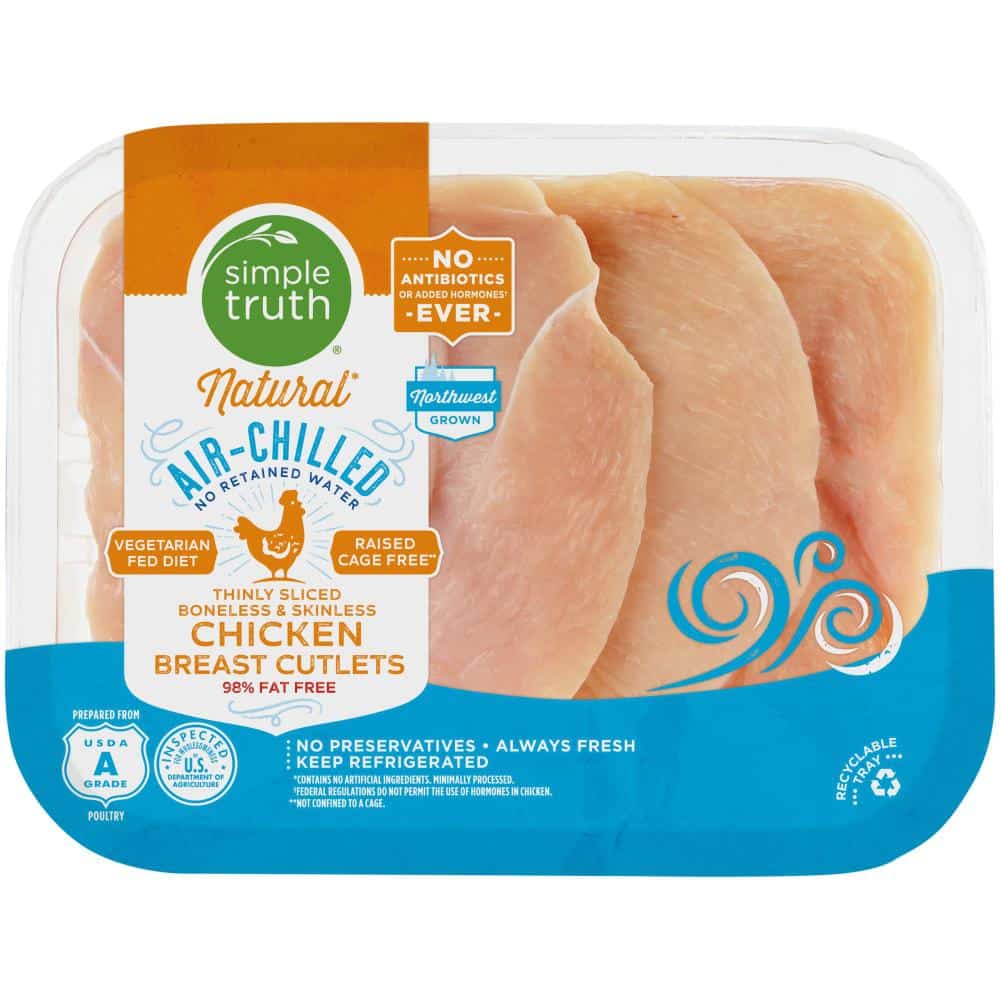
How Long Does Costco Chicken Breast Last In The Fridge?
Costco Rotisserie Chicken can generally be stored in the fridge for up to four days.
Costco Chicken: How Much Are They Worth?
According to the same report, Costco’s chickens weigh at least three pounds cooked, while rivals’ usually weigh one-and-a-half to two pounds. These are things that you shouldn’t buy from Costco.

What Is 100G Raw Chicken Cooked?
What does 100g of chicken raw weigh? After cooking, 100g of chicken breast boneless will likely weigh in at 75 grams.
What makes Costco chicken so good?
The chickens are typically seasoned in factories before being shipped to Costco, which is what earns them their “processed food” title. Dr. Oz assured viewers that chickens are among the most nutritious processed foods available. And that removing skins can make them even more healthy. Win!

What is the Average Weight of Boneless Chicken Breasts in a Pound?
One pound is equal to 450 grams if you take the deck of cards for an example. Serving 100 grams is roughly equal to the size of a deck of cards. It is greater than 1 lb if the label is in kilograms (or KG). Because 1 kilogram is approximately 2.2 pounds. This is easiest to achieve. Because the weight of each packet fluctuates, go through a few to locate one that’s close. A kitchen scale is the best way to weigh each chicken breast.
What Is The Best Temperature To Safely Eat Chicken?
According to the FDA, chicken should be cooked at 165°F (74°C). Cook your chicken until it registers this temperature on a meat probe thermometer and the meat is no longer pink or translucent.

What Does a Chicken Weight?
Evolution has led to an increase in the average chicken’s size over time. As the world’s population continues to grow, so does the need for chicken. A chicken used to weigh 2.5 pounds in 1920s; it was 3.07 pounds by 1950s; today it is almost 6 pounds. In recent years, the size of chicken breasts have increased significantly.
How Much Does A Chicken Breast Weigh
It is important to know the weight of your chicken. You might want to weigh it every time you cook because then you can make sure that everyone gets a healthy amount of food. But it might not be practical to weigh it before or after cooking so instead, there are weight ranges for different parts of a chicken and for calories and protein content. It is important to know the weight of your chicken breast. You need this so that you can make even servings.
It can be hard to weigh the chicken every time you want to cook it, so there are “standards” for how much a full chicken should weigh. A full chicken has different cuts with different sizes and proportions, and they have different calories and protein content too.
HOW MUCH DO CHICKEN BREASTS WEIGH?
The average weight of store bought chicken breasts is around 15 to 18 ounces. Chickens will live for around 10 – 15 years. A female hen will lay on average from 300 to 325 eggs per year, but these eggs are not always fertile so not all of them will hatch. The most common breed used in the US for meat production is the White Rock and Cornish Cross.
Chicken can be cooked by grilling, stewing, baking or steaming it (with a little salt). In different parts of the world people eat different parts of the chicken but in the US we mostly eat breast meat because we like it better. The average weight of store or market bought chicken breasts is around 15 to 18 ounces (425 to 510 grams). Chickens will live for around 10 – 15 years. A female hen will lay on average around 300 eggs per year.
The breed of chicken most commonly bred solely for meat production is the Cornish Cross and White Rock. In the United States, a chicken which is bred only for food is known as a broiler chicken. Chicken can be used in many ways like grilling, stewing, baking, steaming, and deep frying. In different parts of the world different parts of the chicken are eaten such as legs in China or feet in Italy. The average weight of store or market bought chicken breasts is around 15 to 18 ounces (425 to 510 grams).
Chickens live for around 10 -15 years. Females lay on average 300 eggs per year. The most popular breed of chicken bred only for meat production in the United States is the Cornish Cross and White Rock. In different parts of the world, people eat different parts of chickens, but they are all good to eat! The average weight of store-bought chicken breasts is around 15 to 18 ounces (425 to 510 grams).
Chickens will live for about 10 – 15 years. A female hen will lay on average about 300 eggs per year. The most common breed of chicken that is bred only for meat production is the Cornish Cross and White Rock. In the United States, a chicken which is bred only for food is called a broiler chicken.
Chicken can be used in many ways such as grilling, stewing, baking, steaming or deep frying. In different parts of the world, different parts of the chicken are eaten depending on what people like to eat more there. To figure out the weight of a breast, you can use math. Divide the weight of the fat by the number of breasts and then divide that number by four. That way you will know how big each breast is.
A chicken breast can be big or small depending on its size. For example, on average, a serving size of chicken has about 4 ounces in it. Butchers can look at different sizes without needing to weigh them with a scale because they have experience judging them by their looks alone (you should too!).
The best way to serve chicken is to cut it into something small enough that your hand fits around it comfortably, but if you need more than this then make sure you give people smaller pieces (which means bigger breasts). To find out the weight of a breast, take the total weight of fat and divide by how many breasts you have.
You can also use this formula for chicken breasts if you know how much they weigh. Sometimes, breasts are bigger or smaller than two ounces to twelve ounces. A serving size is usually four ounces. There are ways to judge the weight without using a scale, too! One way is to look at how heavy your chicken breast is compared with your hands.
If it’s lighter than your hand, then it’s not enough meat on it and needs more cooking time so that’s not good for eating yet!
HOW MANY CHICKEN BREASTS IN A POUND?
If you are a chef and want to know how many chicken breasts or boneless chicken breasts are in a pound, you aren’t the only one! This is confusing because there is not an exact answer. It will depend on the size of the chicken.
But we will say that for an average size person, 2 cooked/ cubed medium-sized chicken breast with bone: 1 pound is equivalent to 1.5 cups. For 2 medium boneless and skinless chicken breasts (cooked or cubed): 2 cups are equal to 1 pound. If you’re wondering how many chicken breasts are in a pound, then you’re not alone! This is confusing because there is no definite answer.
The number of chicken breasts in a pound depends on the size of the chicken. But, we will give an estimate here (which is not exact). For two medium-sized cooked/cubed boneless and skinless chicken breast: 1.5 cups or 2 cups
THE AVERAGE WEIGHT OF A CHICKEN BREAST IN GRAMS
The weight of a chicken breast is important for people who want to buy one. Chicken breasts are healthier than other meats. One chicken breast is 54 grams. A raw, boneless skinless chicken breast may weigh between 85 grams and 225 grams (8 oz). The weight of a chicken breast is something that most people, when they are buying one, take into account.
They are leaner than other meats and can have extra protein. One chicken breast is about 54 grams- which is 31 grams per 100 grams. On average, a raw boneless skinless chicken breast will weigh between 85 grams (3 oz) to 225 grams (8 oz). 1 ounce equals 28 gams.
HOW MANY OZ IS A CHICKEN BREAST
How many pounds are there in a chicken breast? It’s a good question and one that can be easily answered. The number of pounds in a chicken breast depends on what you have cooked it in, the brand you buy, and if you have seasonings such as Worcestershire sauce or drippings on your purchase.
Also, some breasts cook faster than others due to their shape, and the juices are retained in the breast, they cook differently. If you cook your breasts in a crockpot or a pressure cooker, the breasts cook quickly because the juices are retained in the breasts and aren’t lost by cooking time.Since there is juice inside How many pieces are in a chicken breast? Some have more than others.
A chicken breast has one piece if it is cooked in a crockpot or pressure cooker, but it has more pieces when it is cooked on the stove or oven. What kind of chicken I buy and what I cook with will affect how many pieces there are. Chicken breasts are the meat from the front of a chicken.
They cook faster, so there is less moisture loss during cooking than in other parts of the chicken. The amount of breasts that you get depends on how you cook them, so if you use liquid seasonings like Worcestershire sauce or bacon drippings, then more sauce will be on your meat. This means that there will be more calories in your meal. Chicken is also high in sodium, which can lead to dehydration and cramps for some people.
Be careful not to eat too much salt! The size of your chicken breast depends on the recipe you use. For instance, if you are using liquid seasonings, like Worcestershire sauce or bacon drippings, there will be more sauce on the meat than if you used only dry rubs. Also, how much salt and pepper you put in the recipes affects its calories count.
WHY YOU SHOULD KNOW THE WEIGHT OF YOUR CHICKEN BREAST?
Knowing how much your chicken breast weighs will help you to know if you are eating too many calories. For example, one 3-ounce (86g) serving of boneless and skinless grilled chicken breast provides 170 calories compared to only 25 g of proteins.
Consequently, if you eat a lot of these, it might not be healthy for you because it might be too many! However, this depends on your activity level and other things. Knowing how much your chicken breast weighs will help you control your calorie intake. It can be hard to know how many calories you are eating.
For example, one 3-ounce serving of grilled, boneless and skinless chicken breast has 170 calories. But it is hard to know the number of calories more than that because people’s activity levels vary so much.
If you want to make sure that you are not taking in too many calories, knowing the weight of your chicken breasts is a good idea. But this depends on other factors like an expert’s advice about what would be best for you.
HOW DO WE MEASURE THE WEIGHT OF A CHICKEN BREAST
It is important to weigh your food. You must have a kitchen scale. It can be electric or mechanical, but you need one with a bowl. You should defrost your chicken and then place it on the scale in the bowl.
Use tongs or your hands to weigh it, whichever is easier for you. It is important to weigh food in order to know what nutrients you are getting. Before weighing anything, make sure that you have a scale. This can be an electric or a mechanical one. It doesn’t matter which one you pick – the results will still be the same.
Make sure that your scale has a bowl on it so that you can use tongs or your hands when weighing the raw chicken breast. Let’s start: First, wash your hands then defrost the chicken breast and put it on your scale with a bowl on top of it while also lightly dusting said bowl with flour so nothing falls off onto other things in the kitchen. On your scale, pick up the chicken breast. Record the weight on your sheet of paper. Then use a pair of tongs to put it back down and record the weight again.
This is how much the chicken weighs before you cook it. When you cook it, it usually reduces by 20-30%. That means if you want to eat a 500g piece of chicken breast, then when cooking it you would only get 400-450g worth instead! Weigh the chicken breast on a scale. Add the weight of your chicken breast to the weight of a bowl.
Subtract to get the weight of your chicken breast. Remember that you need to refer to your manual for every type of weighing scale because they might be different, and it is important not to forget this! Freezing can add more water and fat, so it will weigh more when cooked.
Any cooking method reduces the size of the meat because liquid and fat drain off while cooking. This means that when you want 500g in one piece, 20-30% will be removed during cooking, meaning you will only eat 350-450g after cooking. To measure the weight of a chicken breast, we can use just one simple term.
It is not hard to learn. You will need to know one word: “Pounds.” A pound means that a chicken breast weighs less than 10 pounds. Now, if you want to know how many pounds in kilograms, you can use this equation: 1 x 2.2 = 2kg. So, a chicken breast weighs about half as much as it would weigh in kilograms when you convert from pounds into kilograms You need to buy a lot of chicken.
You want to know how to measure the weight of a chicken breast? Well, not many people do. I mean, sure, some are reading this and getting very confused by all the different terms thrown around. So let me try my best to explain everything in this article. Once you get over your confusion over the chicken breast being too heavy for a dog to eat, we can start talking about how we measure a chicken breast’s weight.
This is probably one of the hardest things that you will ever need to learn in your life… but it’s not hard at all on eHow!
IS THERE A DIFFERENCE IN WEIGHT BETWEEN THAWED AND FROZEN?
Usually, frozen chicken is the same weight as thawed chicken. Frozen water can make it a little more heavy but it will not matter. When you thaw your frozen chicken, it will be light and moist. It tastes better than cooked frozen chicken because the cells have more moisture in them and they taste better when they are cooked. Usually frozen chicken will not weigh more than thawed meat.
When the water freezes the meat, it will add some grams to the weight of the chicken. But don’t worry about that because there is no difference in weight when compared to thawed meat. Thawed chicken has many more moist cells than frozen and will hold moisture better while defrosting, but this means you need less moist cells in your cooked dish since they are already wet from being thawed out.
Yes, the weight of thawed meat or chicken is different from the weight of frozen meat or chicken. If you want to know if there is a difference in weight between frozen and thawed food, you need to defrost it the day before cooking it.
So when you cook meat or chicken that has been frozen, there will still be water because it was thawing while being cooked. If you want to know if thawed and frozen chicken are different in weight, please read this. If you get a big chicken or some other food that is hard to cook, then it’s best to cook it the day before. Otherwise, cooking will be harder. Frozen meat does not weigh more than thawed meat.
If there is water on the meat, remove it with paper towels or something else that will work too before cooking.
RAW WEIGHT VS. COOKED CHICKEN BREAST
Cooking meat will change the weight of that meat. Fat and water are cooked off, so the meat will weigh less. Chicken is just like beef or fish when it is cooked, and it will shrink by about 25%. Larger pieces of meat will shrink more than smaller pieces.
If you cook your meat in a frying pan or in the oven, it might not make much difference to the weight after cooking. Cooking meat will make it lighter and smaller. The breast will become smaller because of all the fat and water that is getting cooked away. Chicken behaves the same way, and when cooked, it gets about 25% smaller than before cooking. A bigger size will become smaller by more than a small size.
For example, 4 ounces of breast meat would shrink down to 3 ounces if cooked, but 8 ounces would go down to 6 ounces if cooked. Some cooking methods like frying or drying out your food also affect the weight of your food after you cook it. Do you want to eat less or more chicken breasts? Some people think they should eat more. More cooked chicken breasts is better than eating less. Eating more cooked chicken breasts will help you lose weight and feel healthier, too.
You also need to increase your fiber intake by eating more fruits and vegetables. Crash diets are not good for the body and can cause long-term health problems, so do not depend on this strategy to lose weight. Some people like to cook their chicken breasts in different ways, but it doesn’t make a difference. Cut up the chicken breast into small pieces for cooking. Some people want to lose weight, but are not sure if they should eat less or more cooked chicken breasts.
But it is better if you eat more fruits and vegetables because that will make you feel healthier. It is not good for your body to depend on crash diets, so it would be better if you found a way of eating that was healthy and good for your body. You can lose weight and keep it off, if you eat smaller portions of food and increase your fruit and vegetable intake. You will get the perfect diet plan like this. Sometimes we do not have the chicken breasts that we want to eat, but we must prepare food sometimes.
When cooking meat, a lot of water and fat is cooked away. This takes away some of the weight in meat. Chicken is not different than other meats because when they are cooked, a lot of water and fat are gone too! To lose weight and keep it off, eat smaller portions and increase your intake of vegetables. This will help you get an optimal diet plan.
Although it would be nice to eat chicken breasts whenever we wanted to, sometimes we do not have that luxury. Sometimes, we must cook food which sometimes means using butter or oils in our meals. Cooking meat can decrease a lot of the raw weight because a lot of the water and fat is cooked away, taking some of the original weight with it. Chicken is no different: when cooked its size decreases because much of the water and fat is removed from it as well. Different meats shrink differently.
You may think that they will shrink the same amount, but that is not true. For example, chicken breast will usually shrink by 25% while beef and fish will only shrink by 10%. The size of the chicken breast also has an effect on how much it shrinks. A larger 6 oz chicken breast may only end up being 3 oz when you cook it and a smaller 4 oz chicken breast might be 2.5 oz when cooked.
The difference between two items to shrunk meat might not be very noticeable, but for comparison a 4 oz breast will have been downsized to 3 oz after cooking while a 8 ounce breast might have shrunk down to 6 ounces of meat left if cooked in boiling or braising methods which Different meats shrink in different amounts. Chicken, beef and even fish shrink by about 25% during the cooking process. The size of the chicken breast does affect how much it shrinks, because a larger breast will shrink more than a smaller one. The difference isn’t very noticeable, but for comparison a 4 oz breast will shrink to about 3 oz.
A 8 oz will become around 6 oz of meat left after it has shrunken down. Any type of cooking method that drys the meat will cause it to shrink less than boiling or braising would.
1 POUND OF CHICKEN EQUALS HOW MANY CUPS?
The amount of beef or chicken that you’ll need for a recipe can be determined by how much one pound is. One pound is the same as three cups of meat. Make sure you know what proportion each ingredient goes into the recipe so you know how much to make! The number of cups of the cooking liquid called “chicken” or “beef” is 1 pound. One pound of chicken, because it is a measurement unit, is the same as one pound of raw meat.
So if you have a recipe that needs one pound of chicken then you will need to cook three cups with water and other ingredients such as salt and pepper.
How Much Does A Chicken Breast Weigh? (Pound/Gram)
Counting chicken breast weight, either for cooking or regular diet? Chicken is a favorite protein meat due to low calories, low saturated fat, low calories. But how much weighs a chicken breast in grams? Knowing its weight is paramount for people who wish to serve it fairly. Assuming an average volume in pounds or grams or ounces that weights most is healthy.
Fired the air fryer with rotisserie and make those crispy, juicy, boneless, skinless chicken breasts! The best option is Cosori air fryer max XL 5.8Qt. Apparently, boneless, skinless chicken breasts may be measured to weigh between amounts.
A standard chicken breast weighs 3-8 oz raw on average. The weight can decrease from 1 to 2 ounces after cooking. Normally, sizes differ with each breastfeeding of chicken; however, they can develop but will not exceed 12 oz. Today, the latest averages in grocery stores are 8 to 10 ounces (around 6 lbs.)
If you’re good at judging different weights, you can easily estimate with some simpler methods. Finally, without a scale, you’ll get a reasonably estimated weight. Read also How weights a chicken breast? (Can you guess average chicken breast weight) I hardly buy one meat store chicken breast.
The packed chicken breast is extremely inexpensive and convenient. Filled with 3-4 boneless breasts per bag. Every box comes with a distinct weight, priced per pound. I seldom compute what each packed breast will weigh independently. Get the total fat weight, and divide by breast number.
Thus, math will give you almost any breast’s scale. These chicken breasts differ in size. You can get up to 12 oz. Generally, a serving filet weighs 4 ounces. Butchers can accurately judge different sizes without a scale. Similarly, after a little expertise, you can eyeball weights. One decent way to serve a chicken is the small weight than human hands.
If you serve something smaller, it’s a massive breast. Such weight is probably around 10 oz or more. Another way to judge parts of your food is to use your hand palm while serving. It can be a reference when serving.
How Much Does A Chicken Breast Weigh?
Counting chicken breast weight. Whether for diet or cooking. Its safe assuming an average volume weighs most. Between these numbers, boneless, skinless chicken breasts can be measured. An average breast weighs between 3-8 ounces raw.
After cooking, weight will decrease between 1-2 oz. Chicken breast sizes differ, but usually they don’t get much larger than 12 oz. Today’s poultry breasts are larger and in grocery stores, 8-10 oz are very popular. You can get a fair estimate using a few simple methods to judge different weights. Eventually, you can measure each weight reasonably easily without a scale.How Much Does a Boneless Chicken Breast Weigh?
Second, how many ounces is a skinless chicken breast? Simply, what weighs 2 boneless chicken breasts? Depends on breast size, but usually weighs 8-10 oz. How many boneless chicken breasts are in a pound? Generally, 3/4 pounds of skinless chicken breasts produce 2 cups of cooked chicken. A 3-1/2-pound whole chicken yields about 3 cups of cooked chicken.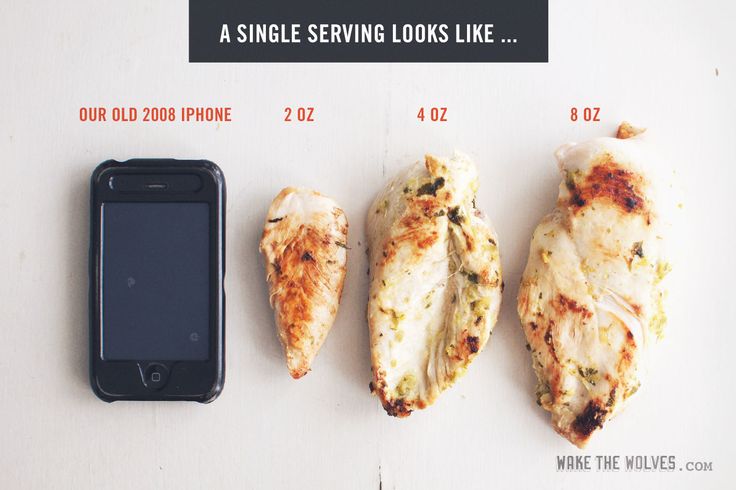
How Much Does a Chicken Breast Weight in Grams
Pixabay One boneless, skinless chicken breast averages 5-6 ounces today. This is an ounce more than 40-year-old average breast weight. A chicken’s total average weight has also increased, with latest estimates around 6 lbs. Everyone. Popularity Chicken Chicken is one of the world’s common protein meats due to its high protein count, low calories and low saturated fat.
Often used as the healthier animal protein relative to red meat. In the U.S. alone, in 2018, fresh chicken sales hit over $10 billion. Chicken farmers are increasing the numbers and sizes of broiler chickens (those bred for meat, not eggs) at a faster pace to keep up with global demand. Size and Development Chicken was relatively small.
A chicken 100 years ago weighed around 2.5 pounds.
Today’s chicken size is more than twice that. Chicken breasts are now measurably bigger, 80% larger than years ago. Indeed, a pair of chicken breast fillets alone weigh more than 2,5 lbs. Chicken producers not only fatten chickens to meet this high demand, but also speed up the process to meet increasing global chicken consumption worldwide.
Rise in the U.S. population Chicken’s rising popularity as low-cost, high-protein meat dovetails with corresponding U.S. population growth. The latest estimates indicate about 330 million U.S. citizens, while the U.S. population was 115 million a year earlier. With chicken remaining a low-cost food staple.
Americans would undoubtedly consume it for several years to come. A nimal advocate Animal activists like PETA and the American Humane Society quote inhumane factory conditions that fed and kept chickens until they hit their market size. Reports of chickens rising crowded, filthy pens overflowing with feces and disease.
Chickens are now much larger than their earlier ancestors. Factory-farmed chickens appear to be squeezed together to improve eating performance. For chickens, this means less movement, since they have less room to run. Ultimately, this leads to bigger chickens sizes, which would possibly add more money to the chicken producer. According to the National Chicken Council, over 9 billion broiler chickens were raised last year.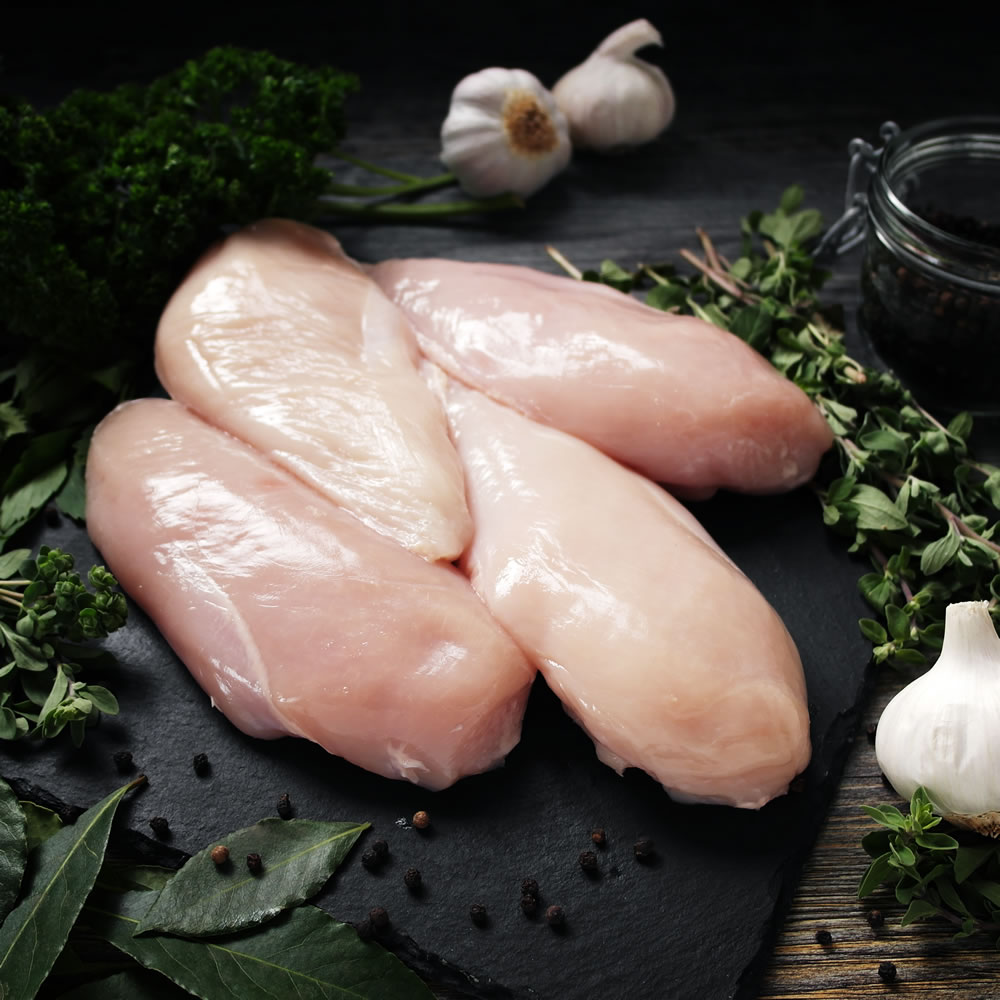
What is Chicken Breast Weight?
Knowing a chicken breast’s weight is critical for people who want to serve it evenly. Otherwise, some health-conscious people also want a chicken breast’s nutritional value. If you want to learn how much a chicken breast weights in grams, you can learn step by step the exact methods and more about chicken and its nutritional value.
How Can You Measure A Chicken Breast Weight?
Everyone knows how important a chicken breast’s weight is to those people who keep their weight healthy by eating meals. Chicken breasts are an outstanding addition to lean protein meals. Chicken breasts are some blend that makes your meals nutritious and hygienic. Still, the weight of a chicken breast depends on the size of your kitchen chicken. Australian birds are bigger and so is the weight. On the other side, medium-sized cage birds are captive in cage and have less movements out.
True, they will often offer less weight than an Australian bird. Domestic birds often have little size and weight. Measuring chicken bird’s weight is critical. The measurement necessity only sheds light when you manage your family’s food menu. Or, preserve health-related diet. Through us, you’ll learn how to weigh a chicken breast and what scales are used to. You will also know the best recipes that include chicken breasts in lower-protein foods.
Defrost Chicken Breast Weigh
To the narratives about how much a chicken breast weighs in grams, I’m a little more to helpful points for my readers. I’m considering some chicken breast weight-scales that come. Accurate and accurate balanced distribution calculation provides a form of good management. Thinking the matter in detail, my efforts will include the most useful tricks and tips to educate you about how to weigh your chicken breast. We know some nutritious foods like chicken meat, salads, vegetables, and snacks.
In this perspective, you’re really uncertain about how much chicken meat to throw in. This happens with almost anyone who isn’t such a cook. It’s difficult to combine healthy flavor of chicken meat in foods, even for domestic aid, without getting me assuring measurements.
Your delicious bird poses an exceptional meaning in dishes for recipes. But obviously, it’s not a simple spell in the witchcraft. This will take you a route to walk and learn the upright measurement for the job. Let’s see some below.
After unpacking the chicken breasts, it’s best to put them on a chopping board or tray. This helps you to inspect the chicken portions individually to see the size of each item. Some would be bigger than others. This is important since larger pieces weigh more than other bits. You’ll have to determine which portions to use for a four, six, or eight-ounce piece. Use a good sharp boning or filleting knife for this move.
Coat the chicken breast pieces with light flour coating to avoid them from sticking to your hands or other utensils you use. Just use a little flour – this coating is not intended to “brown” meat during cooking. Now that you’re able to put the chicken on the scales, you can use tongs or pick up parts in glove-covered hands.
As mentioned earlier, weighing your chicken breasts when they’re raw is necessary. It’s the perfect time to weigh macro-nutrient, protein, and calorie portions. The weight lost from chicken portions while cooking is mostly liquid, or juice, and this loss does not affect nutritional quality. An significant point we’ll mention here is Tare.
This feature lets you weigh chicken portions alone or in half, two or three.
By pressing the Tare button on a digital right scale, the weighing table resets to zero each time, without having to do extra mathematical calculations for different containers. Note, the right digital scale is one that scales very accurately so you know exactly how much chicken breasts weigh. Concluding Chicken breast weight depends mainly on chicken size. Chickens’ different size has the whole different weight.
But sometimes it’s important to know how many grams a chicken breast weighs. When measuring nutrient values, this approach can let you know the exact meat and nutrients. To regulate eating, one should always be careful what amount of food he or she consumes during the day meals. It’s what one can quantify meat’s planned section. Over-consumed calories will harm diet practice. If you want to keep your health stable and strong, all you can take in a standard calculation.
This way you will excel in your efforts. Otherwise, chicken breast weighing arrives at many dinner parties. By weighing the chicken breast, the host may plan the meals correctly. As a result, the program concludes in a structured way that saves program hosts additional costs.
- How Much Does A Chicken Breast Weigh
- HOW MUCH DO CHICKEN BREASTS WEIGH?
- HOW MANY CHICKEN BREASTS IN A POUND?
- THE AVERAGE WEIGHT OF A CHICKEN BREAST IN GRAMS
- HOW MANY OZ IS A CHICKEN BREAST
- WHY YOU SHOULD KNOW THE WEIGHT OF YOUR CHICKEN BREAST?
- HOW DO WE MEASURE THE WEIGHT OF A CHICKEN BREAST
- IS THERE A DIFFERENCE IN WEIGHT BETWEEN THAWED AND FROZEN?
- RAW WEIGHT VS. COOKED CHICKEN BREAST
- 1 POUND OF CHICKEN EQUALS HOW MANY CUPS?
- How Much Does A Chicken Breast Weigh? (Pound/Gram)
- How Much Does A Chicken Breast Weigh?
- How Much Does a Chicken Breast Weight in Grams
- What is Chicken Breast Weight?
- How Can You Measure A Chicken Breast Weight?
- Defrost Chicken Breast Weigh
Average Chicken Breast Weight Guide | Size & Price Insights 2024
Average Chicken Breast Weight Guide | Size & Price Insights 2024
The post Average Chicken Breast Weight Guide | Size & Price Insights 2024 appeared first on Go Guru.


























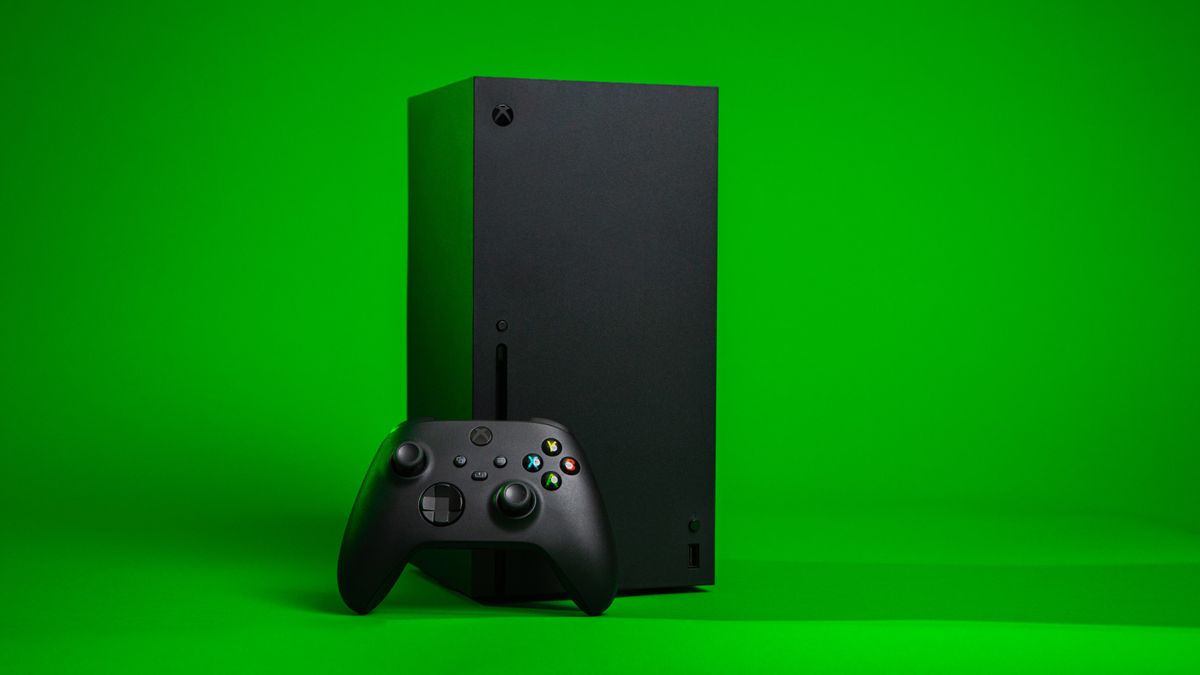




















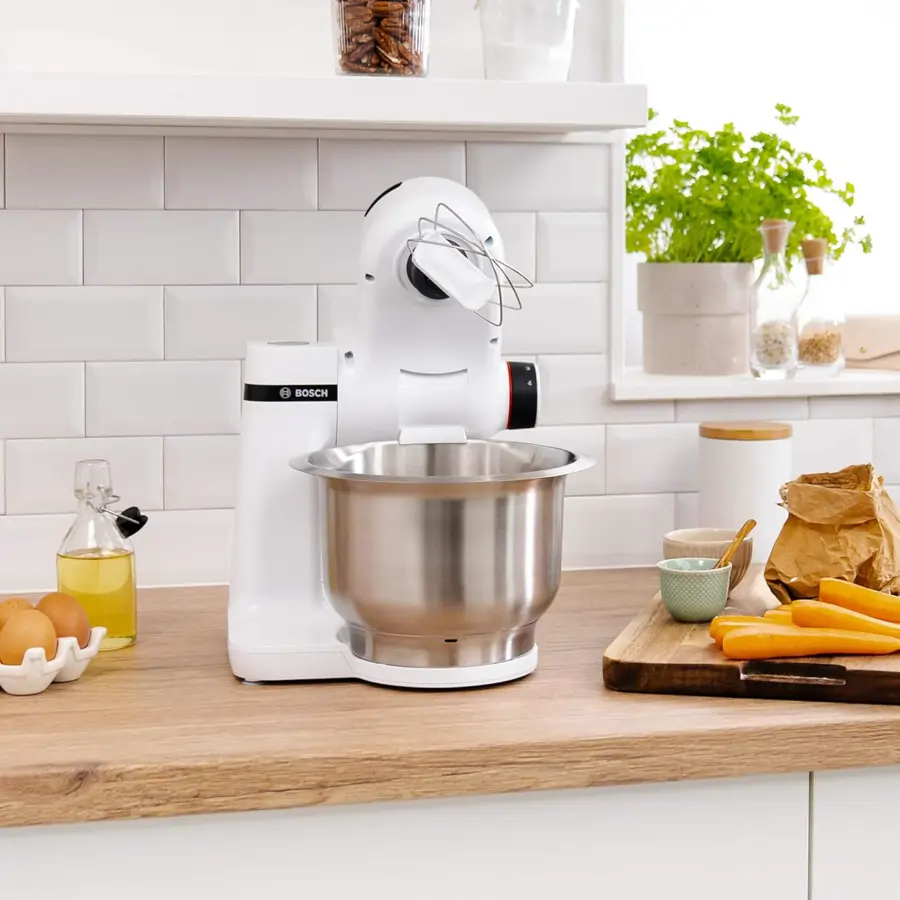
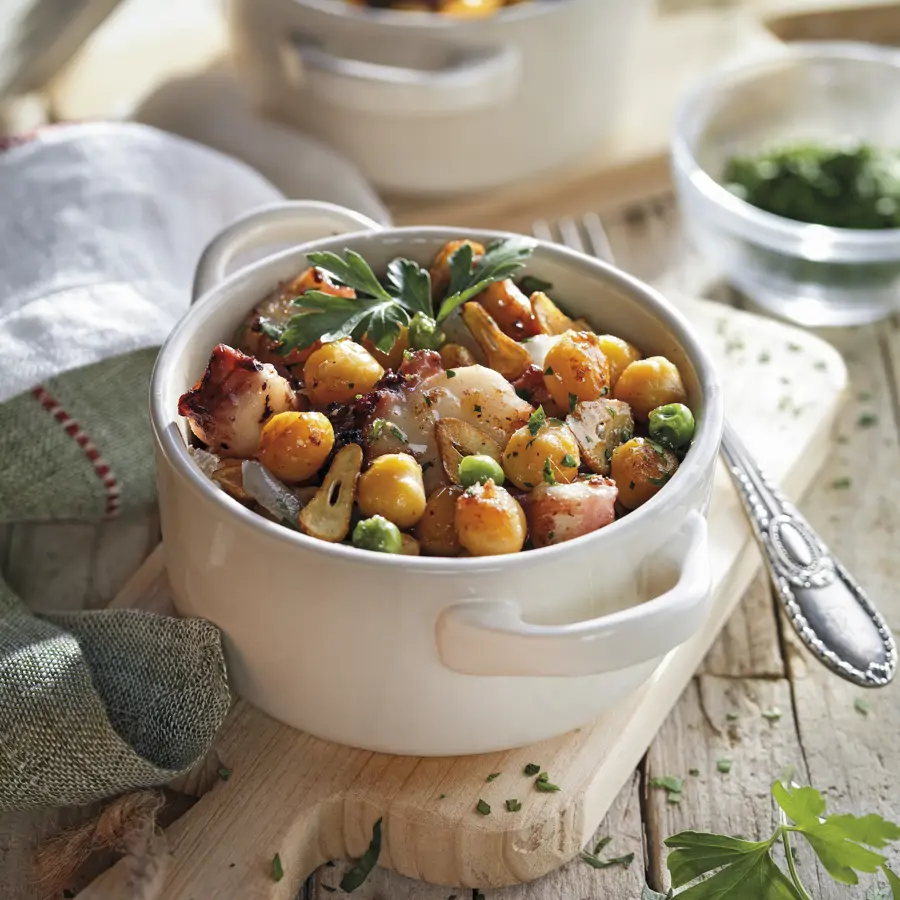

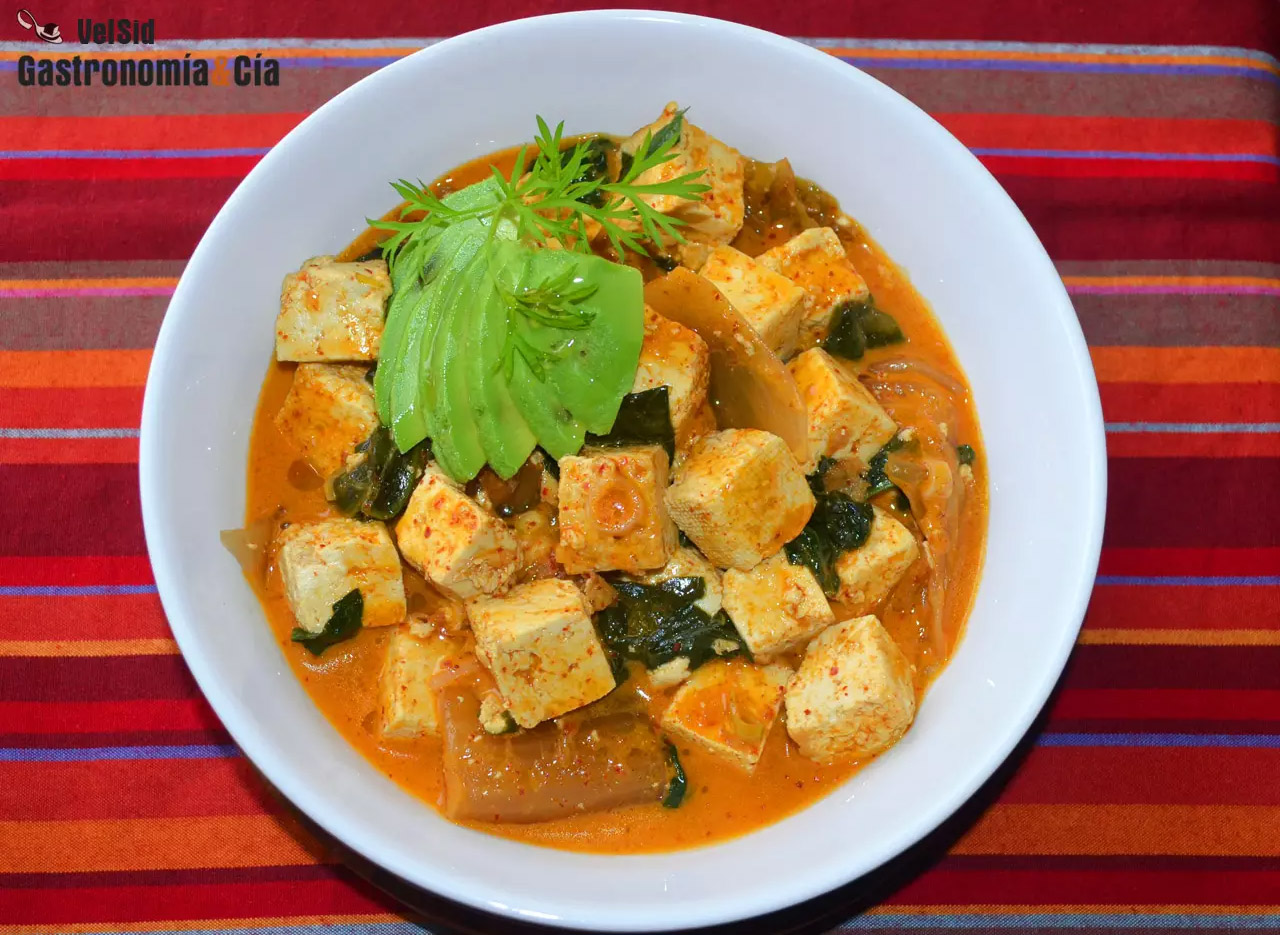

















![El Tour Down Under estrena en Australia la temporada World Tour masculina [Previa]](https://www.esciclismo.com/actualidad/imagenes/b/isaac-del-toro-tour-down-under-et2a-2024-sirotti.jpg)















